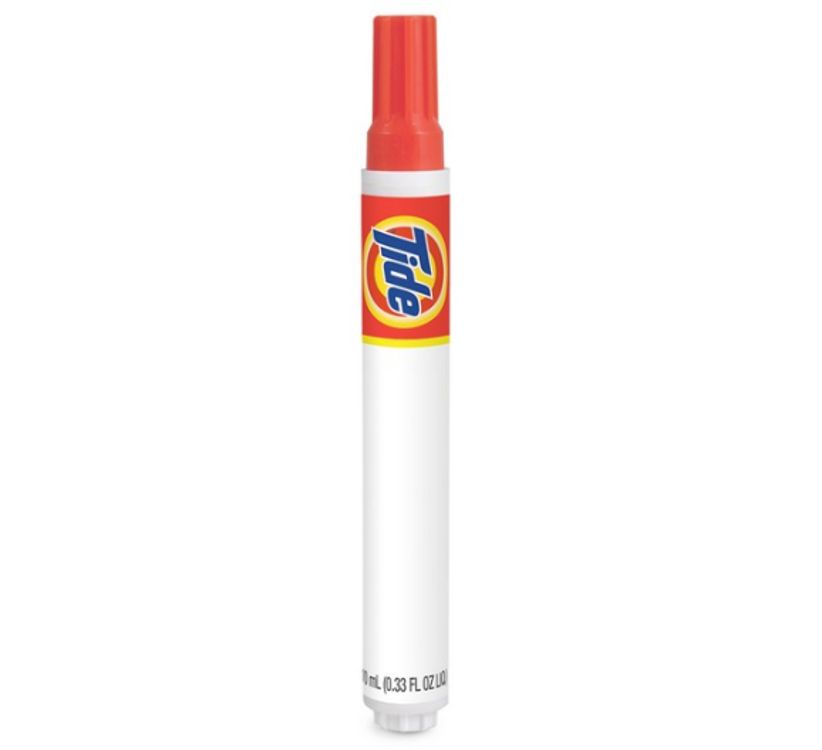The Ultimate Stain Boxer: Custom Tide to Go Stain Removers for Every Spill
Wiki Article
Expert Tips for Effective Stain Removal in Your Cleansing Regimen
In the realm of maintaining an immaculate living area, the fight against persistent discolorations is an ongoing difficulty that several individuals deal with. Effective discolor elimination calls for more than just a sprinkle of cleaning agent and water; it demands a tactical technique and an eager eye for detail.
Recognizing the Discoloration Kind
Figuring out the sort of stain is crucial for efficiently choosing the suitable cleaning approach. Different stains call for different therapy strategies to make sure successful removal without creating damage to the surface area being cleaned up. Common kinds of spots include oil-based discolorations like grease and lipstick, water-based discolorations like juice and wine, natural stains like food and physical fluids, and not natural spots like ink and color. By precisely identifying the sort of stain, cleansing efforts can be targeted in the direction of breaking down the specific elements causing the staining.Different techniques can be utilized to identify the type of discolor, such as visual assessment, touch, and odor. Consulting discolor removal guides or seeking professional advice might additionally be beneficial in instances of strange or especially stubborn stains.
Pre-Treating Stains Prior To Cleaning

Using Household Things for Spot Removal
When tackling stubborn stains, utilizing typical family products can often provide efficient and affordable options for effective elimination. Products such as white vinegar, baking soda, and lemon juice can work wonders in eliminating numerous kinds of discolorations. White vinegar is superb for getting rid of smells and damaging down spots on fabrics.Tips for Particular Types of Discolorations
Structure upon the effectiveness of utilizing house items for discolor elimination, specific types of discolorations require targeted methods for effective elimination. For protein-based spots like blood or sweat, using cold water to soak the textile before washing can stop the tarnish from setting in.When taking care of vibrant stains like those from berries or white wine, it is vital to stay clear of warm water as it can trigger the color to establish. Rather, attempt making use of a mixture of vinegar and water to pre-treat the discolor. Ink stains can be challenging but can typically be gotten rid of by using massaging alcohol or an ink eliminator prior to cleaning.
For persistent stains like coffee or tea, a paste of baking soda and water can function Branded tide to go stain removers marvels in raising the tarnish prior to normal cleaning. Recognizing the nature of the tarnish and using the proper therapy approach without delay is vital to effective discolor removal.
Preventing Typical Errors in Spot Removal
To achieve successful tarnish elimination outcomes, it is critical to be mindful of common blunders that can hinder the effectiveness of the cleansing process. Various discolorations require certain therapies, and making use of the wrong item can lead to more damage or the setting of the discolor. Over-agitating the tarnish or rubbing too intensely can likewise be destructive, as this can spread the stain or damage the material fibers.Conclusion
To conclude, reliable tarnish elimination in your cleaning routine requires determining the discolor kind, pre-treating discolorations prior to cleaning, making use of home products for discolor elimination, and adhering to details tips for different types of stains. It is essential to prevent typical errors in discolor elimination to ensure successful results. By following expert suggestions and techniques, you can efficiently eliminate stains and keep your clothes looking fresh and tidy.Usual kinds of stains include oil-based stains like grease and lipstick, water-based discolorations like juice and wine, natural discolorations like food and physical fluids, and inorganic discolorations like ink and color. custom tide to go stain removers. Consulting discolor removal overviews or looking for expert guidance may additionally be valuable in instances of unknown or particularly persistent discolorations. Pre-treating discolorations is a vital step in the stain elimination process as it aids to damage down the stain and loosen it from the textile fibers, making it much easier to eliminate throughout the cleaning cycle. Different stains require certain treatments, and making use of the wrong item can lead to additional damage or the setting of the stain.In final thought, effective tarnish removal in your cleansing routine requires recognizing the stain kind, pre-treating spots before cleaning, using family items for discolor elimination, and complying with specific ideas for different kinds of discolorations
Report this wiki page